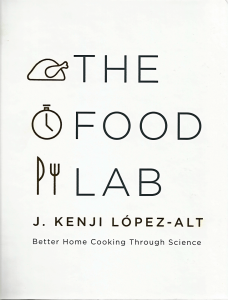Part of studying biochemistry in Oxford was the arcane sounding lecture series, “Enzyme Kinetics” by Raymond Dwek, who claimed that his name was an acronym for “Down With Enzyme Kinetics”. In biology enzymes accelerate chemical reactions in a way that is dependent on temperature: The higher the temperature the faster the reaction goes, until the enzyme itself starts falling apart from the heat. At which point the whole exercise turned into a discussion of cooking. Previous years had had the pleasure of the company of the chef from the restaurant Elizabeth, a pleasure which we had to forgo due to Thatcherite austerity. So while we learned that the yolk of an egg (but not the white) would cook at 70°C, we never saw it in action. And, of course, this was in the days before the discovery of extremophiles, organisms that survive and thrive in environments previously thought to be so extreme as to be devoid of life. Of all these, my favourite is a prawn that can withstand 120°C at high pressures. If caught it could never be cooked, except, perhaps, with a blowtorch. So, don’t come the raw prawn with me.

So what is an American cook book doing on a blog about travelling in New Zealand, where you’re more likely hoping to find the best Kiwi burger, or fish’n’chip shop? And in a review entitled, “Camp Kitchen”? Well, that is exactly the point. It’s never too late to question cooking practices on the track (and off, as well), if some improvement might be attained.
Let’s start with the humbled boiled egg. On track this is the second most important protein source, and try as I might have in recent years, the perfectly thoroughly boiled (but not overcooked) and easily peelable egg has remained elusive. Oh, I’ve heard plenty of stuff, from using older eggs, to dipping them in already boiling water (or was that heating up the eggs and the water together?), but nothing seemed to work consistently, and that is the problem. Even if Pea fared a little better than I in 2015 on the Whanganui, this egg business was still unfinished. Until Kenji. I will be trying out his procedure this time and we will see what comes of it.
One other novelty will be the cooking of pasta, which takes place on the track (whereas the eggs are usually cooked beforehand). As I suppose generations of cooks before me, I had learned that about 10 times the weight of water is necessary to cook pasta (e.g. 100 g spaghetti in 1 L of water). Not true, as it turns out, and I will now proceed to evangelise the world with the revised standard. Bring about 1/3 of the previously necessary amount of water to boil (takes 1/3 of the time and gas) and put in the pasta, bring back to boil, stir to separate any individual pieces sticking together, switch off the gas and incubate for the remaining 10 minutes. Easy as pie.
The reasons for being able to use less water reside in modern pasta production methods that result in pasta with a very smooth (i.e. compact) surface which is not subject to as much degradation a rough surface would be. With less of the pasta dissolving in the cooking liquid, the less glue-like the water becomes, resulting in less sticking to and burning on the bottom of the billy.
That should save about 12 g of gas – more than half – per meal. So while the ten days on Stewart Island were achieved on a single small can of gas in 2013, this at least gives some squiggle room and places spaghetti cooking in between cooking rice, and boiling water for instant noodles.
As I’ve always said about cooking on the track, it has survival value, nothing much more. Those burgers, pizzas and lamb shanks had just better watch out when we return.
